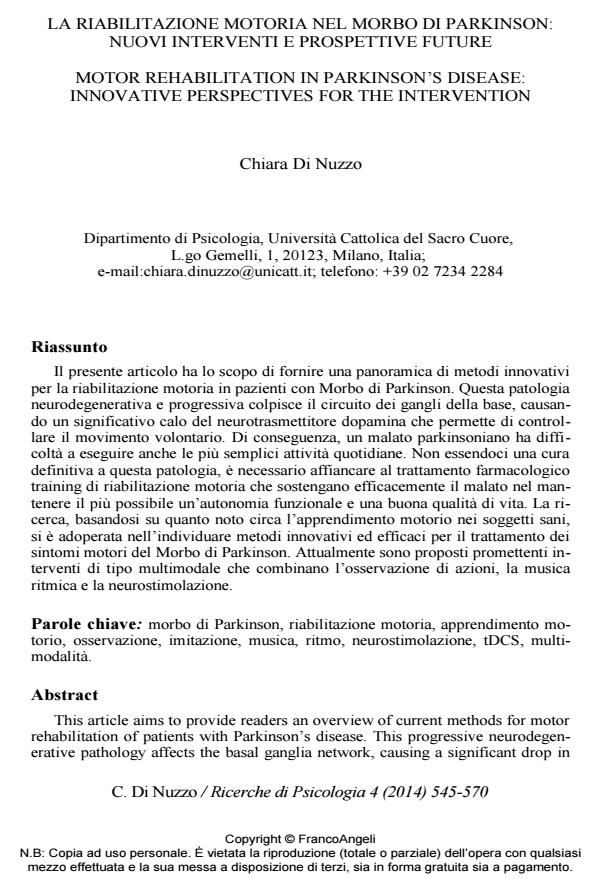Motor rehabilitation in parkinson’s disease: innovative perspectives for the intervention
Journal title RICERCHE DI PSICOLOGIA
Author/s Chiara Di Nuzzo
Publishing Year 2015 Issue 2014/4
Language Italian Pages 26 P. 545-570 File size 254 KB
DOI 10.3280/RIP2014-004002
DOI is like a bar code for intellectual property: to have more infomation
click here
Below, you can see the article first page
If you want to buy this article in PDF format, you can do it, following the instructions to buy download credits

FrancoAngeli is member of Publishers International Linking Association, Inc (PILA), a not-for-profit association which run the CrossRef service enabling links to and from online scholarly content.
This article aims to provide readers an overview of current methods for motor rehabilitation of patients with Parkinson’s disease. This progressive neurodegenerative pathology affects the basal ganglia network, causing a significant drop in the neurotransmitter dopamine, which controls voluntary movement. A patient with Parkinson’s disease has difficulty in performing even the simplest daily actions. Since there is no cure for this disease, motor rehabilitation is necessarily combined to drug treatment to support patients in maintaining functional autonomy and better quality of life as possible. Research, starting from what is known about how motor learning occurs in healthy people, aimed to identify innovative and effective methods for the treatment of motor symptoms in Parkinson’s disease. Currently, promising multimodal interventions are based on actions observation, rhythmic music and neurostimulation.
Keywords: Parkinson’s disease, motor rehabilitation, motor learning, action observation learning, imitation, music, rhythm, neurostimulation, tDCS, multimodality
Chiara Di Nuzzo, La riabilitazione motoria nel morbo di parkinson: nuovi interventi e prospettive future in "RICERCHE DI PSICOLOGIA " 4/2014, pp 545-570, DOI: 10.3280/RIP2014-004002